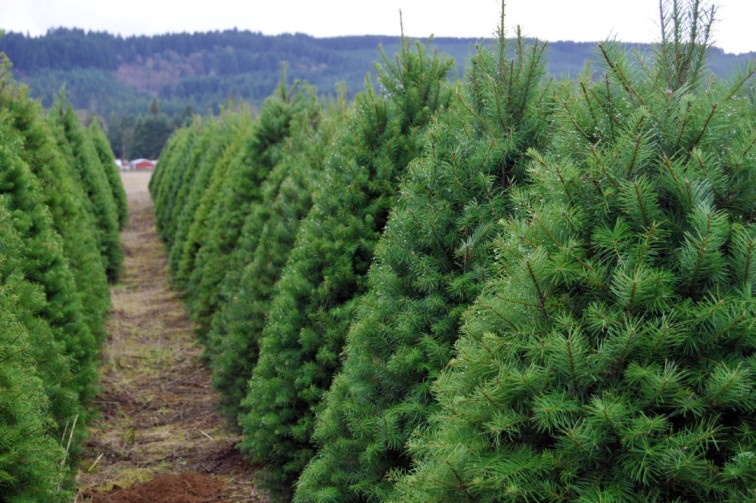
 Some of you may still be wondering where you’re going to get your tree this year. Thankfully, the folks who grow those trees are way ahead of you. They get started with their tree farms in the spring, working through the summer and fall to give you the centerpiece for your holiday joy.
Some of you may still be wondering where you’re going to get your tree this year. Thankfully, the folks who grow those trees are way ahead of you. They get started with their tree farms in the spring, working through the summer and fall to give you the centerpiece for your holiday joy.
One of the first jobs for a tree farmer is getting rid of last year’s stumps. Marcia Urie of Urie’s Tree Farm in Williston begins that process as soon as the snow is gone from the ground. Both she and Mike Isham of Isham’s Farm, also in Williston, start planting in early May. In Morrisville, Tom Paine of Paine’s Christmas Trees starts even earlier. Paine plants his seedlings at the end of April, as soon as the ground has thawed, with the belief that wetter ground gives them a better chance of getting established.
Those seedlings need tender loving care so most growers use a little bit of fertilizer and then some light herbicide, while mowing the rows as often as once a week in the height of the growing season. Isham, Urie and Paine all try to use the least invasive products possible to prevent weeds from taking over the trees. While some growers also use insecticides, Isham believes his location in an open field with the wind blowing across the land has helped keep him free of insect problems.
Even Charlie Brown’s Christmas tree had one solitary branch on top, which is known as a leader. Since not every tree grows that way, farmers go from row to row, shaping them into the conical figure most people prefer. Paine gets started early, often beginning his trimming the first week of July and sometimes finishing up by the end of September. Isham also starts his pruning in July but Urie, who has the smallest operation of the three, admits that if it’s really warm during the summer months she waits until September to shape her trees with a machete.
After the tops of the trees are shaped, there’s work to be done at the bottom. A process known as basal pruning provides trees with a “handle” which allows them to be easily carried and put in tree stands. Isham said basal pruning is generally not done until a tree is four years old because in younger trees, the branches grow back. Basal pruning has the added advantage of providing growers with material for wreaths, which explains why Urie does it as late in the season as possible.
Even with all this TLC, not every tree survives long enough to be decorated with tinsel and family heirlooms. This May was so hot and dry that Urie had to haul water to her trees; something she’d never done before. Then the rains came and she lost a number of firs due to the saturated ground. The constant rain caused Isham to lose almost a third of his new plantings and close to 50 of his older trees.
“When I first started I thought I could use marginal soil,” he said “but I’ve learned the hard way that it has to be well drained.” In 2012, Isham’s problems were at the other end of his trees. Birds —particularly crows—landing on the top branches broke many of the leaders. Urie hasn’t had much trouble with birds, but deer have been known to munch on the tops of her trees.
Isham and Urie favor Fraser firs while Paine is partial to balsams. Balsams have a stronger aroma while Frasers hold their needles better and are harder to grow. Paine is able to grow Frasers because his land is mostly sand and gravel; Frasers aren’t fond of wet soil. Urie also grows some spruce trees but found there isn’t much demand for them.
Farmers say it’s hard to figure out how many trees to plant, given their uneven mortality rates and the fact that most people are looking for trees in the eight- to 10-foot range. Last year, Isham closed his stand on Dec. 9 to make sure he would still have mature trees to sell this year.
“I didn’t want a reputation for just having four or five foot trees,” he said. “I’m fortunate that I live in a good community where people support local agriculture. The public allows farms like mine to stay in business, which, in turn, allows us to keep the land open. Vermonters are great that way; they’re willing to support local farms.”
Those agri-friendly Vermonters are what keep these farmers going.
 Related Articles & Free Subscription
Related Articles & Free Subscription
Give Your Christmas Tree a Second Life in the Landscape
Keep Holiday Plants Looking Their Best






Comment here